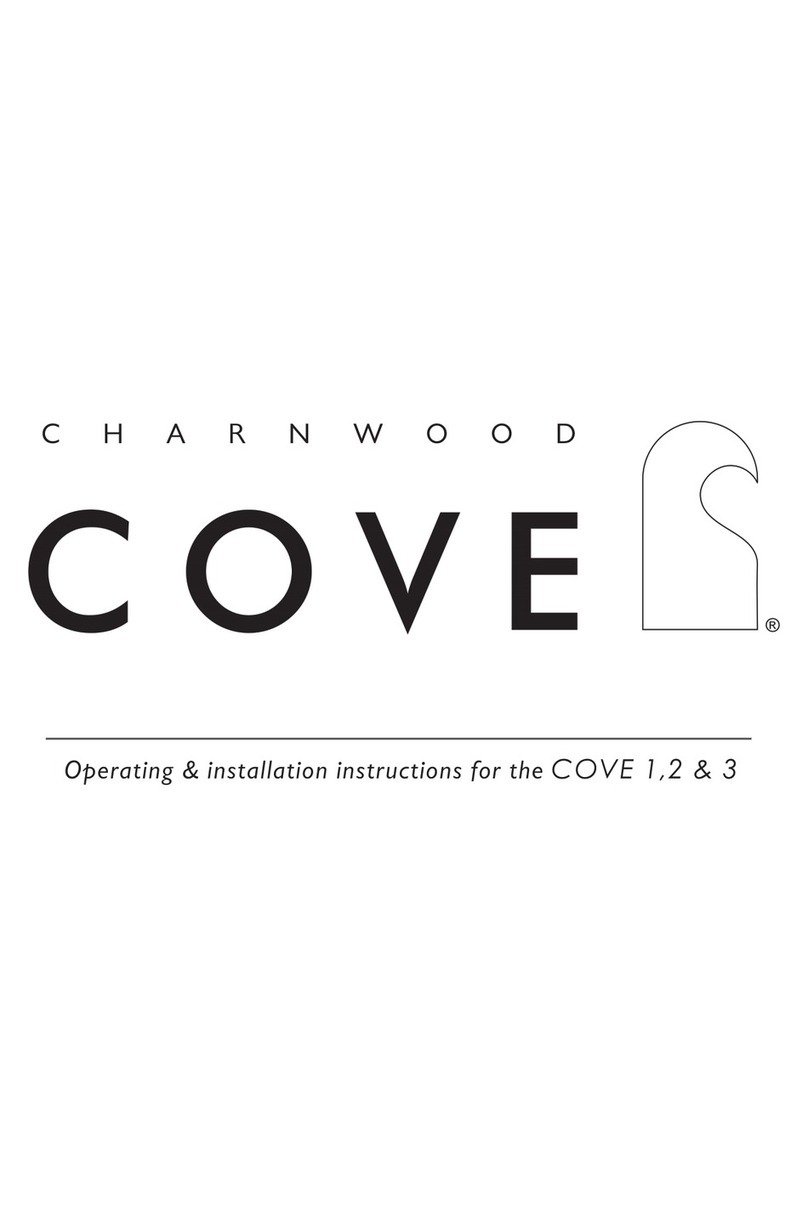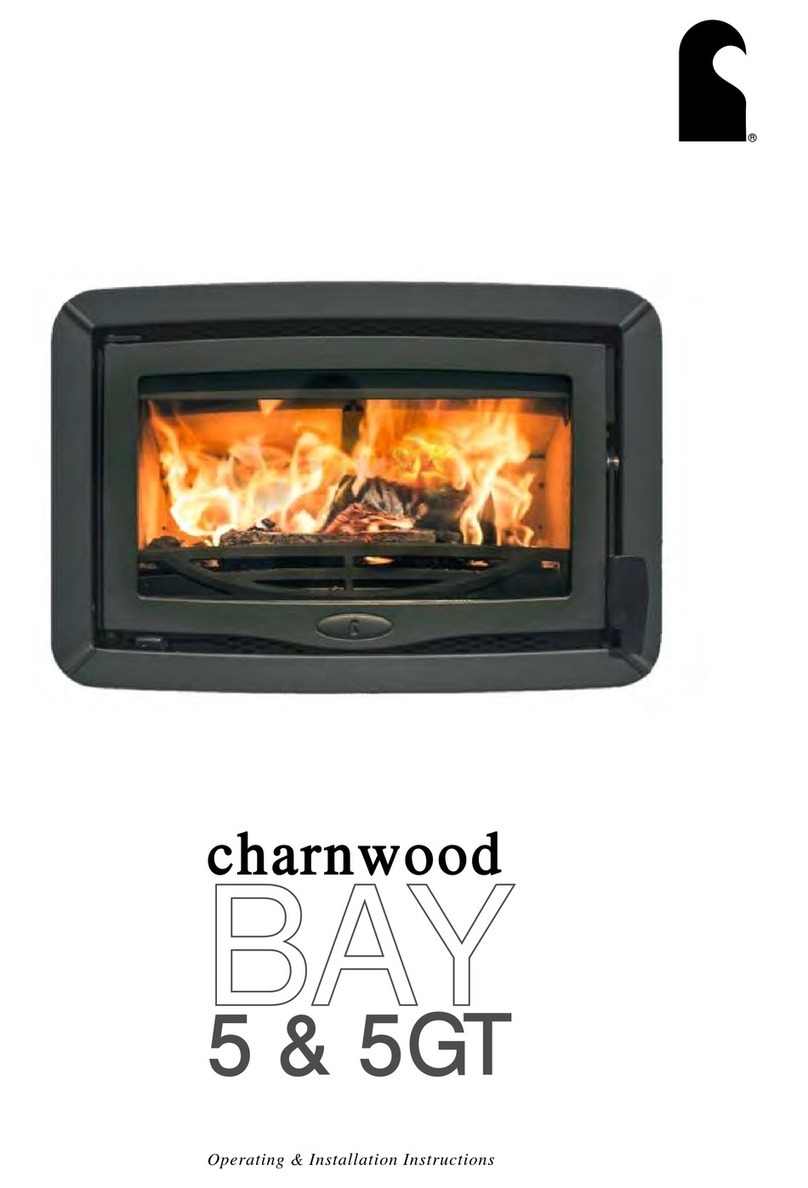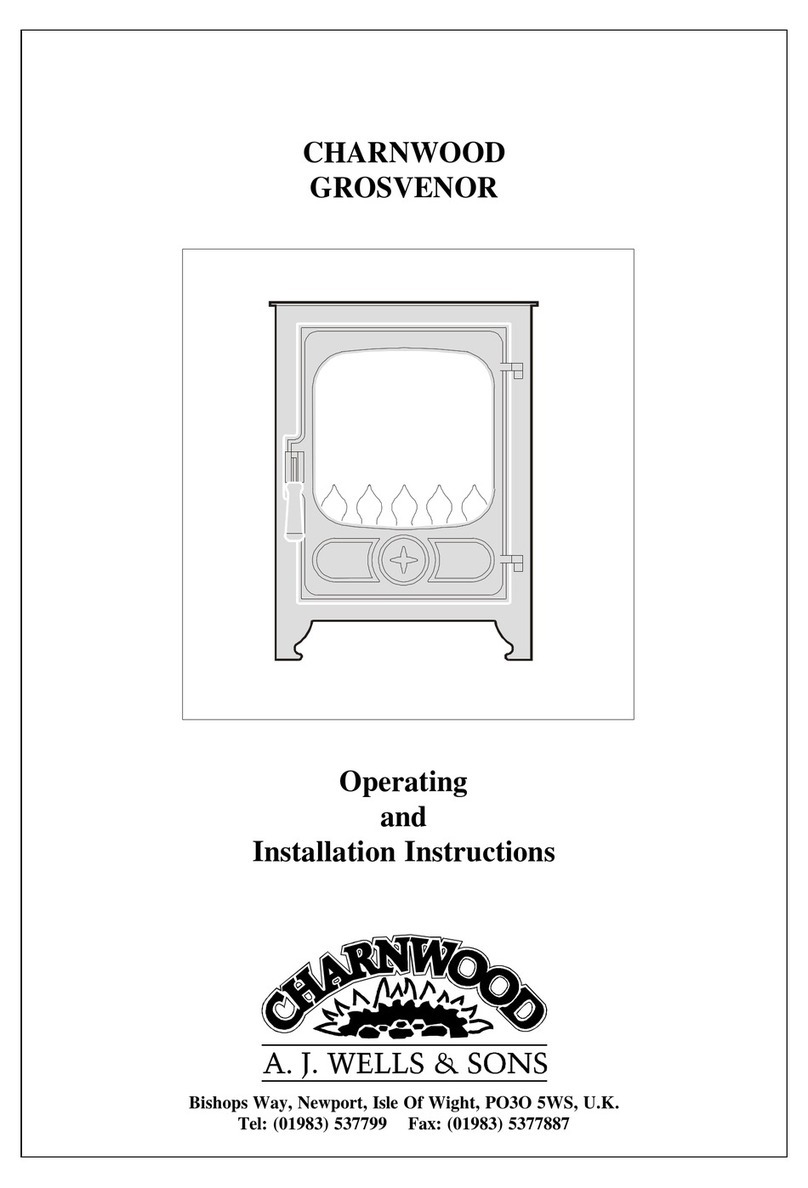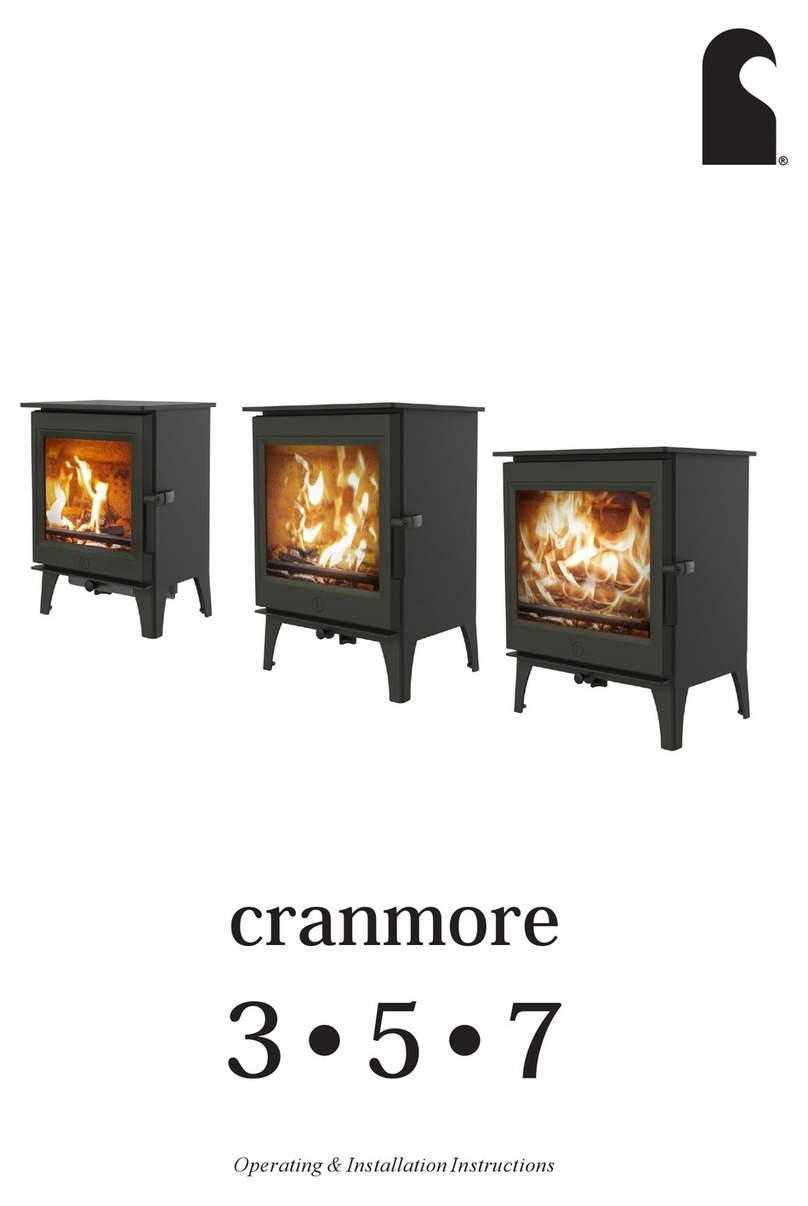
the glass and cause premature failure. Aerosol spray cleaners should
not be used near the appliance whilst it is under fire.
If the fire is going to be out of use for a long period (for instance in
the summer) then to prevent condensation, and hence corrosion, the
air control should be left fully open and the fire doors left ajar. It is
also advisable to sweep the chimney and clean out the fire. Spraying
the inside of the doors and firebox with a light oil, such as WD40,
will also help to keep all internal parts working well.
After long periods where the fire has been out of use, the chimney
and appliance flueways should be cleaned before lighting.
For the fire to operate correctly it is important that the door seals
are in good condition. Check that they do not become worn or
frayed and replace them when necessary.
It is recommended that the fire is serviced once a year to keep it in
first class working order. After cleaning out the firebox thoroughly,
check that all internal parts are in good working order, replacing any
parts that are beginning to show signs of wear. Check that the doors
seals are in good condition and that the doors seal correctly. A
servicing guide is available on request. Repairs or modifications may
only be carried out by the Manufacturer or their approved agents.
Use only genuine Charnwood replacement parts.
It is important that the throat plate and all the stove flueways are kept
clean. They should be checked approximately once a week, by
looking up into the firebox for signs of soot or fly-ash on the throat
plate and at the sides of the firebox. If there are signs of a build up of
soot or fly-ash deposits then the fire must be let out in order to clean
the throat plate and flueways.
Before attempting to clean the throat plate and flueways ensure that
the fire is cold. Wear suitable gloves to prevent irritation from soot
deposits. To remove the throat plate lift the front edge up and slide
the plate forward until it comes clear of the front pegs, then swing
the front edge down (see Fig. 3.).
The chimney should be swept at least once a year. Where a top
outlet is used it will generally be possible to sweep the chimney
through the appliance.
First remove the side fire plates, and the throat plate.
W h en Not i n U s e
D o o r S e a l s
S e r v i c i n g
T H R O A T P L A T E A N D F L U E WA Y
C L E A N I N G
CHIMNEY SWEEPING
front firebar,
Then sweep the chimney ensuring that soot is removed from all
horizontal surfaces after sweeping.
In situations where it is not possible to sweep through the appliance
the installer will have provided alternative means, such as a soot door.
After sweeping the chimney the appliance flue outlet and the flue
pipe connecting the stove to the chimney must be cleaned with a flue
brush.
After clearing any soot from within the stove, replace the throat plate
(see 3), the front firebar .
Different types of sweep's brushes are available to suit different
flueways. For standard brick chimneys a wire centre sweep's brush
fitted with a guide wheel is recommended. For prefabricated
insulated chimneys the manufacturers instructions with regard to
sweeping should be consulted.
Check that:
a) the air inlet at the rear of the stove is not obstructed in any way,
b) chimneys and flueways are clear,
c) that a suitable fuel is being used,
d) that there is an adequate air supply into the room,
e) that an extractor fan is not fitted in the same room as the stove.
f) there is sufficient draw in the chimney, (once the chimney is warm a
draught reading of at least 0.10 inches (2.5mm) water gauge (25 Pa)
should be obtained).
Keeping the glass clean requires a certain amount of experimentation
due to the differences in the draw of different chimneys. The
following points should be noted and with a little care should enable
the glass to be kept clean in most situations:
a) The airwash relies on a supply of heated air to keep the glass clean,
therefore, when lighting the stove allow the firebed to become well
established before closing the air control. This also applies when re-
fuelling the stove.
b) When re-fuelling keep the fuel as far back from the front firebar as
possible, do not try to fit too much fuel into the firebox.
c) Wet wood or logs overhanging the front firebars will cause the
glass to blacken.
d) There is a bypass slide that can be adjusted to suit the particular
installation. This allows a small amount of airwash air to enter the
stove even when the air control is closed. This can be adjusted to help
Fig. side fireplates, and
T R O U B L E S H O O T I N G
F i r e W i l l N o t B u r n .
D o o r G l a s s B l a c k s U p
Page 5
Island 06.07



















































